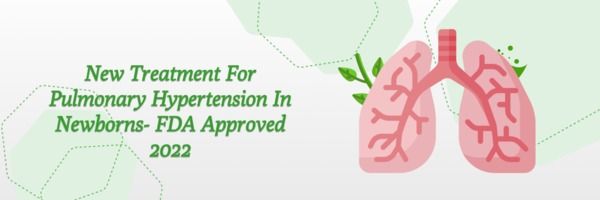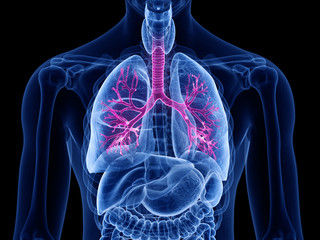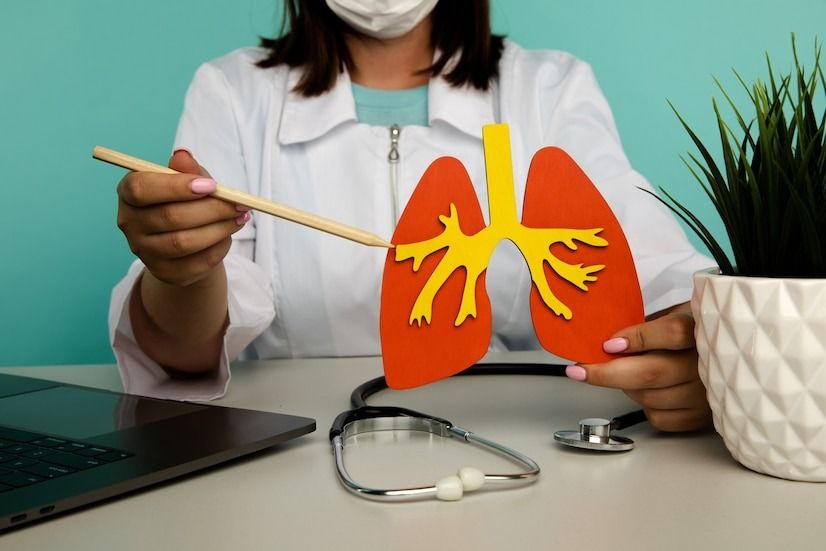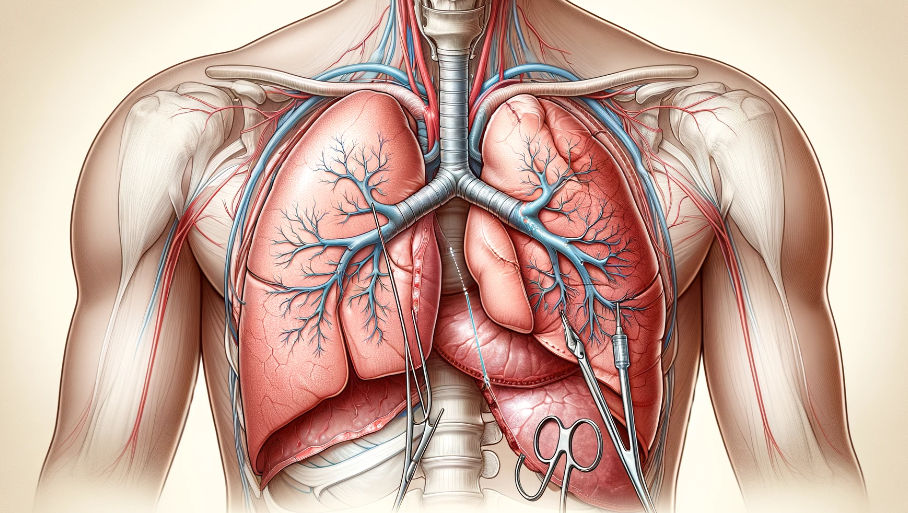What is a bilateral lung transplant?
A bilateral lung transplant is a surgery where doctors replace both sick lungs with healthy ones from a donor. This is done to help people with really bad lung problems, like breathing difficulties or infections. The goal is to give them better lungs so they can live better and longer. It's a big surgery and needs careful planning and care afterward.
Let's find out when a bilateral lung transplant becomes the lifeline.
When is a bilateral lung transplant recommended?

A bilateral lung transplant might be suggested if:
Someone has a bad lung disease that's not getting better with other treatments.
A person might not live more than 2 to 3 years without a transplant.
Lung transplants can help with conditions like:
COPD (a lung problem usually from smoking)
Cystic fibrosis (a problem with thick mucus in the lungs and stomach)
Pulmonary hypertension (high blood pressure in the lungs)
Idiopathic pulmonary fibrosis (scarring of the lungs)
Waiting for a Breath of Fresh Air! Just like waiting for your turn on a swing, waiting for a bilateral lung transplant can be an intriguing journey.
How long is the waiting time for a bilateral lung transplant?

When you need both lungs replaced, it's called a bilateral lung transplant.
The time you wait for this surgery can be a bit like waiting for a turn on a swing:
1. Right Fit: Doctors look for lungs that fit you perfectly, like finding shoes that feel just right.
2. Healthy Lungs: They need lungs from a healthy person, like borrowing a toy that works well.
3. How Bad: If you're very sick, you might jump ahead in line, like when you really want a turn on the slide.
4. In Line: People waiting for new lungs wait in line. How long you wait depends on how many people are ahead, just like waiting for your ice cream turn.
5. Your Health: If you're not doing well, you might get new lungs faster, a bit like getting a special treat when you're not feeling great.
So, the wait time is different for everyone. It's like waiting for a gift that will help you feel better, and you hope it comes at the right time!
Let's unveil the checklist for becoming a candidate for a bilateral lung transplant.
Your health is too important to ignore – schedule your appointment now.
What are the criteria for being eligible for a bilateral lung transplant?

A bilateral lung transplant is when both of someone's lungs are changed with new ones because their old lungs aren't working well anymore.
To be picked for this special surgery:
1. Hard-Time Breathing: The person should have a really tough time breathing, even with medicine.
2. Body Check: Other parts like the heart should be working fine.
3. Age and Health: How old and healthy they are matters.
4. No Smoking: It's better if they don't smoke or quit for a while.
5. Feeling Okay: They need to feel good in their head too, as it's a big surgery.
6. Helping Hands: Friends or family should help them after.
7. Following Rules: They agree to take medicine and see the doctor a lot after.
8. Know What's Up: They should know what could happen during and after surgery.
If they fit these things, doctors think the surgery can work well for them.
Join us as we explore the puzzle of matching lungs for a successful bilateral lung transplant.
How are bilateral lung donors selected and matched with recipients?

When both lungs in a person are very sick and need to be replaced, doctors find healthy lungs from someone who has passed away but donated their organs. They pick lungs that are a good fit in size and type for the sick person. This is like finding a puzzle piece that fits just right. Doctors also make sure the blood and tissues match between the donor and the sick person. When they find a good match, they do the surgery to put the new lungs in. This helps the sick person breathe better and feel better. Matching the lungs well is like putting the right pieces together for a successful bilateral lung transplant.
Take charge of your health and your life. Contact us today!
What is the success rate of bilateral lung transplants?

A bilateral lung transplant is a surgery where both of a person's old lungs are taken out and new lungs from a donor are put in. On average, around 7 to 8 out of every 10 people who have this surgery live through the first year after it.
But whether it works great can depend on how healthy the person was before, why they needed the new lungs, and how their body reacts to the new lungs. It's important to keep visiting the doctor and taking care of the new lungs for a better chance of things going well. Just remember, everyone's situation is a bit different.
Ready to uncover the potential hiccups that can follow a bilateral lung transplant?
What are the potential risks and complications associated with a bilateral lung transplant?

Imagine you have two really sick lungs, and doctors decide to replace them with healthier ones in a big surgery.
But there are some things to watch out for:
1. Body's Defense: Sometimes, the body might not like the new lungs and try to fight them.
2. Easy to Get Sick: The medicines given after surgery can weaken your shield against germs, so you need to be careful.
3. Friends in Trouble: Because of the big change, other parts of your body could get upset.
4. Breathing Challenge: Even with new lungs, breathing might not become super easy.
5. Medicine Surprises: The medicines can bring some not-so-fun surprises like weight gain, diabetes, or weaker bones.
There can be other problems like blood clots, bleeding, or airway (breathing path) issues and and lung problems after the surgery after the surgery. Visiting the doctor on time and taking medicines as they say is super important for things to go well.
Wondering how the recovery journey unfolds after getting new lungs? Explore the steps!
How long does the recovery process take after a bilateral lung transplant?

After getting both of your lungs replaced in a bilateral lung transplant, it takes a few months to get better.
First, you'll be in the hospital for a few weeks. Then, over the next months, you'll practice breathing with your new lungs and take medicines. You need to be careful not to catch germs and do what the doctors tell you.
Doing exercises will make you stronger, and going for check-ups will make sure you're doing okay. The goal is to go back to doing normal things, like before, but it might take a while. Just remember, it's a slow process, so don't rush it.
Let's explore the horizon of hope for a healthier and better-breathing future!
Your well-being is our priority - call us to book your appointment today
What is the long-term outlook for patients who undergo a bilateral lung transplant?

Imagine getting new lungs because your old ones are really sick. Some people feel great after this, breathe better, and live longer. But for others, things can be trickier. Sometimes, the new lungs might not work well with your body or might get sick too. Doctors will keep an eye on you and give you special medicines to help. So, while getting new lungs can make life better, it's important to be careful and listen to the doctors to stay healthy.
Let's dive into other ways to address lung problems and improve breathing.
Are there any alternative treatment options to a bilateral lung transplant?

A bilateral lung transplant means getting new lungs for both sides. But if that's not possible, there are other ways to help with lung problems.
Doctors can give medicines to make things better, and exercises can strengthen the lungs. Breathing machines and therapies can also help. Sometimes, just one lung might need fixing, which is called a unilateral lung transplant. It all depends on what's best for each person's situation.
Heard about living donors providing lungs? Let's uncover the unusual but fascinating possibility.
Can a living donor provide lungs for a bilateral lung transplant?
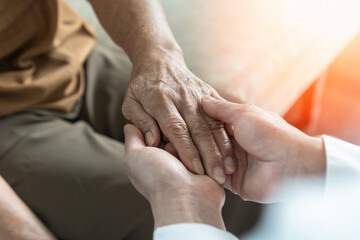
A bilateral lung transplant means getting both lungs replaced. Sometimes, a person can get a lung transplant from living donors, where 2 donors give lungs to 1 person. This is not very common.
In this kind of transplant, a part of the right lung is taken from 1 donor, and a part of the left lung is taken from another donor. Both lungs are removed from the person getting the transplant and replaced with the donated lung parts from the donors, all in one surgery.
This is mostly done for people with cystic fibrosis, and the donors are usually close family members.
To do this, the blood groups of the person getting the transplant and the donors need to match.
Embracing a Healthier Lifestyle! Let's delve into the adjustments that ensure your new lungs thrive.
What lifestyle changes are necessary after a bilateral lung transplant?

After a bilateral lung transplant (when you get new lungs), you need to make some changes to stay healthy:
1. Take Medicine: You'll have special pills to stop your body from rejecting the new lungs and to prevent infections. Take them just like the doctor says.
2. Stay Clean: Wash your hands a lot and keep everything clean. This helps keep away bad germs that can make your new lungs sick.
3. Eat Good Food: Eat fruits, vegetables, and healthy foods. This helps your body heal and keeps your new lungs strong.
4. Move Around: Start with easy exercises and slowly do more. This makes your body strong and helps your new lungs work better.
5. Stay Away from Sick People: Don't be around people who are sick. Also, if you need to, wear a mask to protect your new lungs.
6. No Smoking: Don't smoke or be near smoke. Smoking hurts your new lungs and can make them not work well.
7. See the Doctor: Go to your doctor's appointments. They will check how you're doing and help you stay healthy.
Remember, these changes are important to help your new lungs stay in good shape and make you feel better.
FAQs

Q: What Is a Bilateral Lung Transplant, and Who Typically Requires This Procedure?
A: A bilateral lung transplant involves the replacement of both lungs in a patient with severe lung disease or failure. It is often considered for individuals with conditions such as cystic fibrosis, idiopathic pulmonary fibrosis, or severe COPD.
Q: How Are Donor Lungs Matched to Recipients for a Bilateral Lung Transplant?
A: Donor lungs are matched to recipients based on factors such as blood type, lung size, tissue compatibility, and medical urgency. This matching process helps ensure the best chance of success.
Q: What Is the Bilateral Lung Transplant Surgery Procedure Like?
A: The surgery typically involves the removal of the patient's diseased lungs and the replacement with healthy donor lungs. The procedure can take several hours and requires the patient to be under general anesthesia.
Q: What Is the Recovery Process Like After Bilateral Lung Transplant Surgery? A: Recovery varies from person to person, but it generally involves a period of hospitalization, followed by intensive rehabilitation and ongoing medical monitoring. Full recovery can take several months.
Q: What Are the Potential Risks and Complications Associated with Bilateral Lung Transplants?
A: Risks and complications can include rejection of the donor lungs, infection, organ failure, or issues related to the use of immunosuppressive medications. Close medical supervision is essential to manage and address these risks.
Q: Can Bilateral Lung Transplants Extend a Patient's Life and Improve Quality of Life?
A: For many patients with severe lung disease, bilateral lung transplants can significantly extend life expectancy and enhance the quality of life by restoring lung function.
Q: Are There Long-Term Lifestyle Changes or Medications Required After a Bilateral Lung Transplant?
A: Yes, patients will need to take immunosuppressive medications for the rest of their lives to prevent rejection of the donor lungs. Additionally, they will need to make lifestyle adjustments, including regular follow-ups with healthcare providers and maintaining a healthy lifestyle.
Q: How Can I Determine If I Am a Candidate for a Bilateral Lung Transplant? A: Candidates for bilateral lung transplants undergo a comprehensive evaluation by a transplant team. They consider factors like lung function, overall health, and the severity of the lung disease to determine eligibility.
Reference
https://www.mayoclinic.org/tests-procedures/lung-transplant/about/pac-20384754
https://www.ncbi.nlm.nih.gov/pmc/articles/PMC8662466/
https://www.nhs.uk/conditions/lung-transplant/
https://www.optechtcs.com/article/S1522-2942(12)00120-1/fulltext

